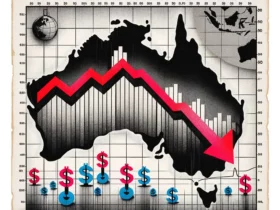Aside from addition, subtraction, and division, multiplication (denoted by ‘x’) is a mathematical operation. We will learn how to solve multiplication problems quickly and easily in this article. Multiplication is just like the building block of Mathematics, let’s go through the concept of multiplication and division as well as its uses in day-to-day life.
In his book Deutsche Arithmetica, German mathematician Michael Stiefel used the capital letters M and D to denote multiplication and division (1545).
A bar with a point above and below is one of the division symbols that is still in use. A Swiss mathematician named Johann Heinrich Rahn introduced it in his work Teutsche Algebra (1659).
The multiplication of two numbers in arithmetic represents the repeated addition of one number with respect to another. These can be whole numbers, natural numbers, integers, fractions, and so on. If m is multiplied by n, it means that m has been added to itself ‘n’ times or vice versa.
In mathematics, multiplication is defined as repeatedly adding a number with respect to another number. For example, multiplying 3 by 2 means that 3 is added to itself twice, resulting in 3 + 3 equals 6. This is a simple method for teaching children how to multiply numbers.
The division is the process of dividing something into equal parts or groups. The division is the result of “equal sharing”. Let’s take for example, if you have twelve cupcakes and you have three friends who want to share them, how should the cupcakes be divided?

12 Cupcakes Divided by 3
Answer: 12 divided by the number 3 is 4. They get four cupcakes each.

For example, if we have three groups of five roses and need to find the total number of roses, we can either add the roses within the groups (5 + 5 + 5) or multiply the number of groups by the number of roses in one group (5 + 5 + 5). (3 groups x 5 roses)
5 + 5 + 5 is equivalent to 3 x 5. (3 groups of 5)
Multiplying is the process of repeatedly adding a number. (Before we can multiply, the numbers must all be the same.) Learning the Times Tables makes sense when you think about it this way.
During the Babylonian period, they used an ideogram: “a-du.” They put one-factor side by side and nothing else in the Bakhshiili manuscript, the oldest manuscript of Indian mathematics. Bhaskara Acharia (1114-1185), an Indian mathematician, used the word “bhava” or “BHA” just after the factors. As we have already discussed in this article, other mathematicians have used the letter M for multiplication and the letter D for division.
In the past, the cross of San Andres was used by many algorithms to solve division and multiplication products and various proportions. It’s possible that Oughtred chose the cross as a symbol for multiplication in 1631 for this reason.
“ X “
Except for the mathematicians Gottfried W. Leibniz and Isaac Newton, who were not entirely comfortable with the symbol, it was widely accepted.
‘7 X 2’ OR ‘7.2’
As a result, Leibniz popularised the dot as a symbol of multiplication.
In day-to-day life when children start handling money, sharing items with friends, and cutting food into portions as part of their daily lives, they begin to develop division and multiplication skills. Because they are exposed to these concepts at a young age, they will not only gain confidence in the subject but will also be able to apply these skills in the real world. This is how cute math explains the concepts of multiplication and division, including real-life applications of it.







